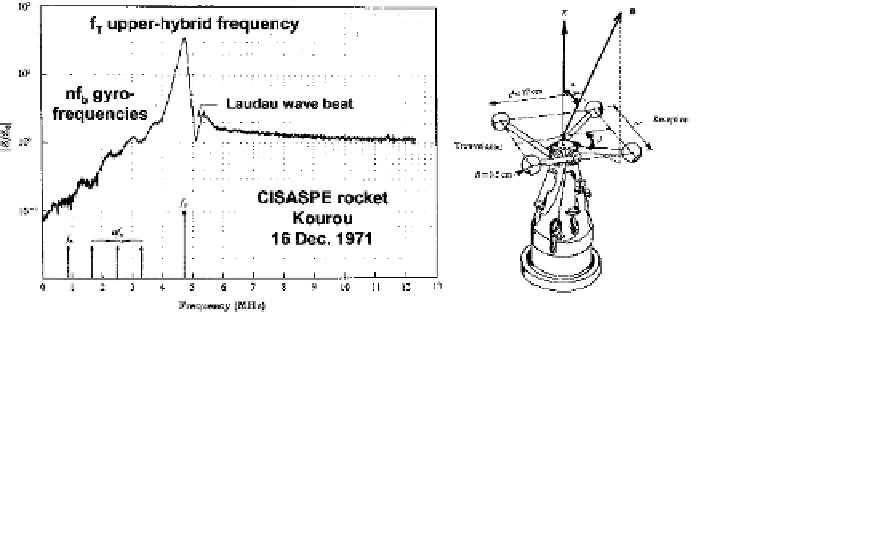Geoscience Reference
In-Depth Information
lines are theoretical responses. The resonance peak occurs at the plasma
frequency
f
p
from which the electron density
N
e
is deduced. The shape
gives the Debye length
λ
D
and therefore the electron temperature
T
e
.
3. Representative Quadripole Impedance Probes
A h.f. quadripole probe was launched from Kourou aboard the CISASPE
rocket, on 16 December 1971, one hour before sunset. The apogee, 227 km
altitude, was reached in 8 min, and the ionosphere was explored for
6 min 30 s. The sensor consists in 4 booms, each of them bears a sphere,
3 cm in diameter, at its end. The spheres are connected to the matching
impedance device located inside the central mast (Fig. 3). Once deployed
the spheres are at the corners of a plane square, 17 cm in length.
6
The warm
magnetoplasma theory predicts: a resonance at the upper-hybrid frequency,
f
T
, an anti-resonance (at least) at
f
D
that depends on the Debye length
(the Landau wave beats with a cold plasma term and leads to a minimum
in the impedance modulus when the receiver-transmitter distance is close
to a whole number of electrostatic wavelengths). Anti-resonances may also
be observed at harmonics of the electron cyclotron frequency,
nf
b
.Obser-
vations have actually confirmed these predictions (Fig. 3). From the
nf
b
,
f
T
,and
f
D
the magnetic field strength, the plasma density
N
e
,andthe
electron temperature
T
e
were determined.
6
The Debye length was 5 mm at
215 km altitude and reached 5.3 mm at apogee. These values have to be
Fig. 3. Quadripole impedance probe on the ionospheric rocket CISASPE and modulus
of the mutual impedance normalized with respect to its value in vacuum, at 227 km
altitude.
6









